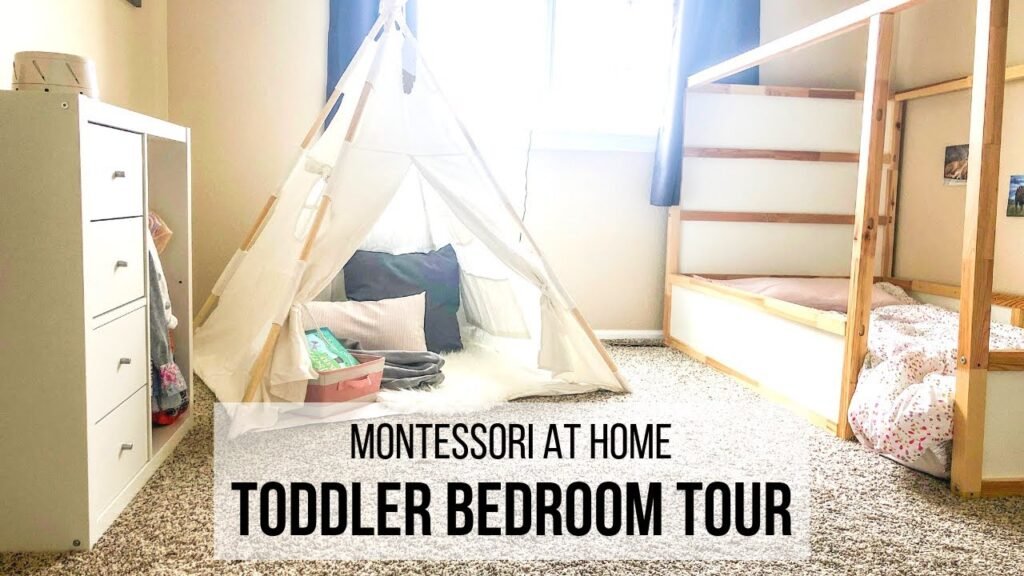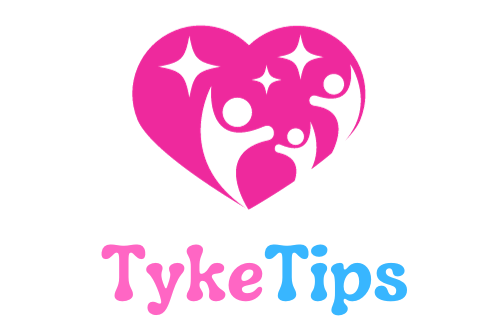You’re in for a treat as you explore the simple design ideas for setting up a Montessori bedroom for toddlers. Take a virtual tour of Kylie’s 2-year-old bedroom with helpful tips and EASY Ikea hacks for a Montessori floor bed and DIY wardrobe. From a cozy reading nook to baby-proofing strategies, this article will guide you through creating a nurturing and independent space for your little one. Plus, learn about the music featured in the video and how to follow Hapa Family on Instagram for more inspiring content.
Meet Ashley, a mom sharing her Montessori toddler bedroom tour for her 26-month-old daughter. Discover how to set up a care of self area, a Montessori wardrobe with drawer inserts, a forward-facing book basket, and a Montessori floor bed with borders. Experience the joy of baby-proofing and the convenience of a toy rotation system in the closet for busy parents looking to implement Montessori principles at home. Don’t miss out on Ashley’s DIY tips and the creative solutions she and her husband have found to create a loving and functional space for their growing toddler.
Purpose of a Montessori Bedroom
When setting up a Montessori bedroom for your child, the primary goal is to create an environment that fosters independence, freedom of movement, order, and organization. A Montessori bedroom is designed to cater to the child’s developmental needs and encourage their natural inclinations for learning and exploration.
Encourages independence
One of the key components of a Montessori bedroom is the emphasis on fostering independence in children. By providing them with a space that is tailored to their needs and abilities, children are encouraged to take charge of their environment, make choices, and engage in self-directed activities.
Promotes freedom of movement
A Montessori bedroom allows children to move freely and explore their surroundings without constraints. Low furniture, open spaces, and child-sized items enable children to navigate their environment with ease, promoting physical development and coordination.
Encourages order and organization
In a Montessori bedroom, everything has its place, and children are encouraged to maintain order and organization in their space. Accessible storage solutions, such as open shelving and drawer inserts, help children keep their belongings tidy and easily accessible, teaching them valuable life skills from a young age.
Choosing the Right Furniture
When selecting furniture for a Montessori bedroom, it’s essential to prioritize items that are conducive to the child’s independence and development.
Low-to-the-ground bed or floor bed
Opting for a low-to-the-ground bed or a floor bed allows children to get in and out of bed independently. It also provides a safe sleeping environment for younger children who may be prone to rolling off a traditional-height bed.
Child-sized furniture such as table and chairs
Child-sized furniture promotes proper posture and engagement in activities. Tables and chairs that are proportionate to the child’s height allow for comfortable and independent use, encouraging children to participate in various tasks and projects.
Open shelving for easy access to toys and materials
Open shelving provides children with easy access to their toys, books, and learning materials. This setup encourages children to select and return items to their designated places, fostering responsibility and organization skills.
Creating a Care of Self Area
In a Montessori bedroom, it’s essential to dedicate a space for self-care activities and exploration, promoting self-awareness and independence.
Low mirror for self-exploration
A low mirror placed at the child’s eye level allows for self-reflection and exploration. Children can engage with their reflections, practice grooming skills, and develop a sense of self-identity.
Shelf with items like make-up kit and bracelet for self-care practice
Including items like a make-up kit and a bracelet on a shelf encourages children to engage in self-care activities. Children can practice grooming routines, jewelry selection, and personal expression in a safe and stimulating environment.

Setting Up a Montessori Wardrobe
An organized and accessible wardrobe is essential in a Montessori bedroom to facilitate independent dressing and promote autonomy.
Drawer inserts for organization
Drawer inserts help children categorize and organize their clothes, accessories, and personal items. Children can easily locate and select clothing items, fostering decision-making skills and independence.
Bar for hanging clothes at child’s level
A low bar for hanging clothes enables children to access and hang up their clothing independently. This setup encourages children to engage in dressing routines and learn practical life skills in a Montessori bedroom.
Accessible shelves for shoes and accessories
Incorporating accessible shelves for shoes and accessories allows children to store and retrieve items without assistance. By providing designated spaces for their belongings, children learn the importance of organization and care for their possessions.
Designing a Cozy Reading Nook
A cozy reading nook in a Montessori bedroom promotes a love for reading, independent play, and relaxation.
Forward-facing book basket for easy access
A forward-facing book basket enables children to select and return books without difficulty. This arrangement encourages children to engage in reading independently, fostering a passion for literature and storytelling.
Comfy cushions or bean bags for seating
Comfortable seating options, such as cushions or bean bags, create a cozy and inviting space for children to relax and read. These items provide a comfortable spot for children to unwind, explore books, and enjoy quiet time in their Montessori bedroom.
Soft lighting for a relaxing atmosphere
Soft lighting in a reading nook creates a calming ambiance for children to enjoy their books. Natural light or warm lamps can enhance the space, making it an inviting and peaceful environment for reading and quiet activities.
Implementing a Toy Rotation System
To minimize clutter, promote creativity, and maintain children’s focus, a toy rotation system is essential in a Montessori bedroom.
Closet or shelving system for rotating toys
Dedicate a specific area, such as a closet or shelving unit, for rotating toys and materials. By regularly switching out toys, children stay engaged, explore new options, and prevent overwhelming clutter in their environment.
Limiting the number of toys available at once
Limiting the number of toys accessible to children at a time encourages them to focus, engage deeply, and foster creativity. By offering a curated selection of toys, children learn to appreciate and explore each item thoroughly.
Encouraging creativity and focus with less clutter
A clutter-free environment promotes creativity, focus, and independence in children. By organizing and streamlining toys and play areas, children can engage in purposeful and imaginative play, leading to enhanced learning experiences and self-directed activities.
Safety Measures and Baby-proofing
Maintaining a safe and child-friendly environment is crucial in a Montessori bedroom to ensure children’s well-being and security.
Outlet covers and corner guards for safety
Installing outlet covers and corner guards minimizes potential hazards and protects children from accidents. By baby-proofing electrical outlets and sharp corners, children can explore their space safely and independently.
Securing furniture to walls to prevent tip-overs
Anchoring furniture to walls prevents tip-overs and enhances the stability of items in the bedroom. This safety measure minimizes the risk of accidents and ensures children’s safety while moving and playing in their Montessori environment.
Creating a safe and child-friendly environment
Overall, creating a safe and child-friendly Montessori bedroom involves thoughtful consideration of potential risks and implementing safety measures to protect children. By prioritizing safety and well-being, parents can create a nurturing and secure space for children to learn and grow.
Artwork and Decor at Child’s Level
Displaying artwork and decor at the child’s eye level in a Montessori bedroom enhances their sensory experiences and engagement with their environment.
Displaying artwork and photos at toddler’s eye level
Placing artwork and photos at the child’s eye level invites interaction and exploration. Children can appreciate visual stimuli, engage with images, and develop their aesthetic preferences in a space tailored to their perspective and height.
Including a variety of textures and materials for sensory stimulation
Incorporating diverse textures and materials in decor and furnishings encourages sensory exploration and tactile experiences. Children can touch, feel, and interact with different surfaces, fostering sensory development, curiosity, and engagement in their Montessori bedroom.
Creating a visually appealing and engaging space
By curating a visually appealing and engaging environment, parents can inspire children’s creativity, imagination, and appreciation for aesthetics. Artwork, decor, and design elements contribute to a stimulating and enriching space that encourages children to explore, learn, and grow.
Incorporating Montessori Principles
When designing a Montessori bedroom, it’s essential to incorporate key Montessori principles that support children’s development and learning.
Encouraging independence and self-regulation
Montessori bedrooms promote independence and self-regulation in children by providing opportunities for autonomy, decision-making, and self-directed activities. Supporting children in developing essential life skills empowers them to become confident, capable individuals.
Promoting hands-on learning and exploration
Hands-on learning experiences in a Montessori bedroom allow children to engage actively with their environment, materials, and tasks. Play-based exploration fosters curiosity, problem-solving, and cognitive development, laying a foundation for lifelong learning.
Fostering creativity and imagination through open-ended play
Open-ended play encourages creativity, imagination, and self-expression in children. By providing a variety of materials, tools, and opportunities for creative expression, parents can nurture children’s artistic inclinations, innovative thinking, and imaginative play in a Montessori bedroom.
Joining Montessori Online Communities
Connecting with other parents and educators in Montessori online communities offers support, inspiration, and valuable resources for setting up a Montessori bedroom.
Connecting with other parents and educators for support
Engaging with fellow parents and educators in Montessori online communities provides a platform for sharing experiences, seeking advice, and building a supportive network. By connecting with like-minded individuals, parents can gain insights, tips, and encouragement in creating a Montessori bedroom for their children.
Sharing ideas and inspiration for Montessori bedroom setups
Sharing ideas, inspirations, and creative solutions for Montessori bedroom setups fosters collaboration, creativity, and community engagement. Parents can exchange tips, recommendations, and success stories to enhance their children’s living spaces and make informed decisions based on shared experiences.
Learning from experienced Montessori practitioners and professionals
Learning from experienced Montessori practitioners and professionals in online communities offers valuable guidance, expertise, and best practices for implementing Montessori principles in a bedroom setting. Parents can access expert advice, resources, and mentorship to optimize their Montessori environment and support their child’s holistic development.
In conclusion, creating a Montessori bedroom involves thoughtful consideration of the child’s needs, interests, and developmental stage. By incorporating Montessori principles, safety measures, and creative design elements, parents can establish an engaging, stimulating, and nurturing space for their children to thrive and grow. Through collaboration, inspiration, and community support, parents can build a Montessori bedroom that reflects their child’s unique personality, fosters independence, and promotes a lifelong love of learning.

